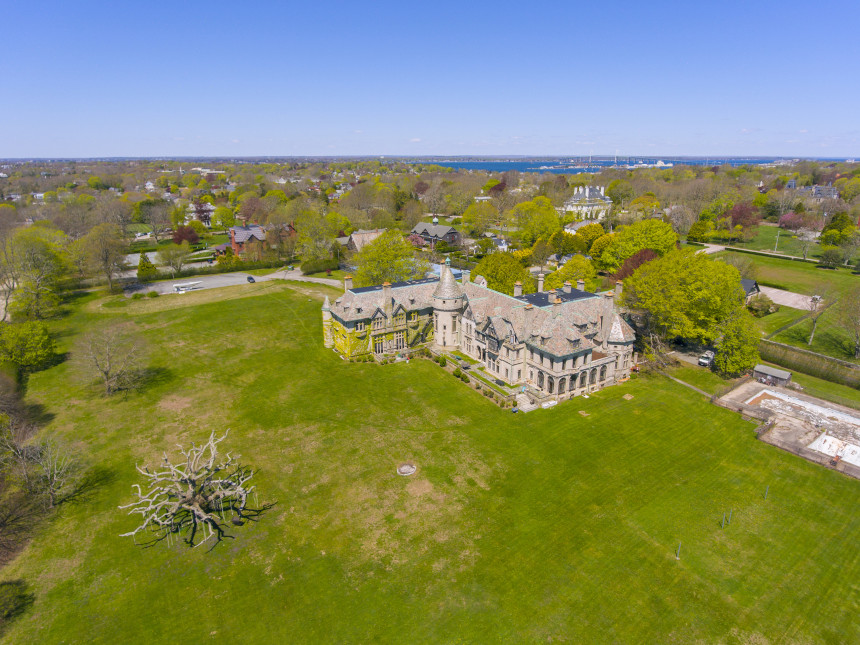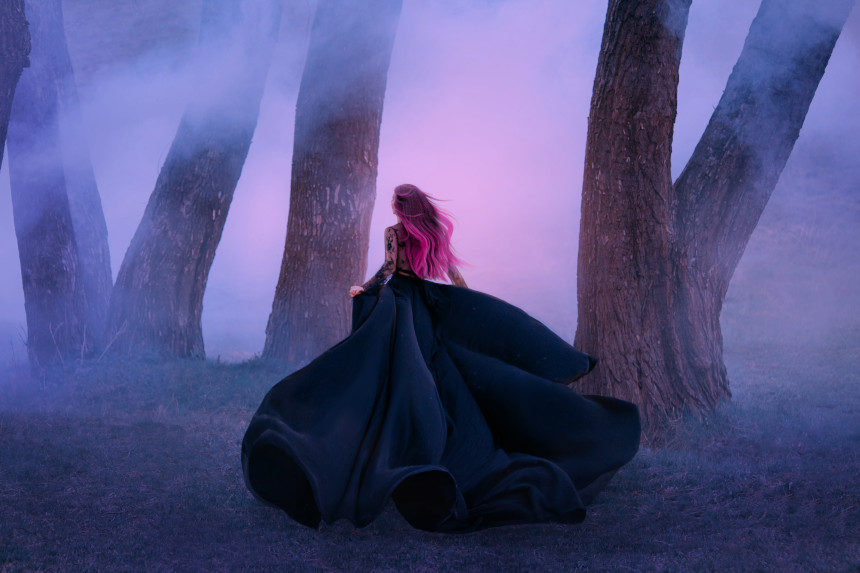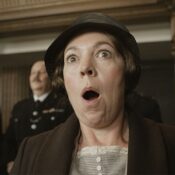It’s unusual, but not unheard of, for a TV series to break out into theaters as the regular show continues to run on television. It’s slightly more common with animation (or puppetry), with examples like The Simpsons, South Park, and The Muppet Show all pulling it off during their runs. In terms of live-action, the list is much smaller, with notable efforts being the 1960s Batman and The X-Files, which scored a hit film between seasons five and six of the series. However, Dark Shadows managed to put a feature film on the big screen featuring a number of main cast members while the series continued to run daily. It wasn’t a surprise that the show bucked tradition or expectations; after all, it had been doing just that since its 1966 debut.
Dark Shadows was the brainchild of Dan Curtis, a writer, director, and producer whose output had a seismic impact on the horror television genre. Over the years, Curtis hopped back and forth between television and film. His 1975 TV movie Trilogy of Terror, based on three stories by Richard Matheson, is routinely listed among the best horror films ever made for the medium. He adapted a number of classic horror novels for TV to great success, including the 1973 version of Dracula with Jack Palance in the lead. In the 1980s, he adapted Herman Wouk’s World War II novels The Winds of War and War and Remembrance into a pair of mini-series that were nominated for a combined 19 Emmy Awards, Remembrance winning for Best Mini-Series. He also directed The Night Stalker, the film that introduced Jeff Rice’s intrepid reporter character Carl Kolchak to wider audiences; the 1972 TV film was the highest rated TV film of all time at that point, with 48 percent of all TV viewers in the U.S. tuned into the movie on the night it ran. That film led to a hit sequel, The Night Strangler, and the spin-off series, Kolchak: The Night Stalker.
Curtis formed the idea of Dark Shadows around a dream he had of a woman on a train. Encouraged by his wife, his successfully pitched his concept of a Gothic soap opera to ABC in 1965. He teamed up with Art Wallace, a seasoned writer with years of genre TV experience, to flesh out the overall idea and story bible for the new series. Wallace and Curtis wrote the first eight weeks of the series (40 episodes), and then Wallace traded back and forth with screenwriter and playwright Francis Swann on the next nine weeks.

The series began by leaning on the more traditional tropes of Gothic romance, with Curtis’s “woman on the train” becoming Victoria Winters, who was drawn into a Jane Eyre-inspired plotline. Less than a year into the run of the show, ratings were less than great. In an effort to boost interest, Curtis went all-in on the horror angle by introducing vampire Barnabas Collins, played by Jonathan Frid. The show exploded in popularity, picking up three million viewers in a year. The daily timeslot (usually 4 p.m., though it had runs at 3:30 p.m.) gave teens the chance to discover the show after school, and they became a solid component of the audience. Emboldened by their success with Barnabas, the creators went full steam ahead with ghosts, witches, werewolves, and more. Time-travel became a component, with entire weeks of the series spent in different time periods; of course, Barnabas (as a vampire) and others could appear up and down the timeline, while some actors simply played their ancestors or descendants as needed.
A scene from House of Dark Shadows (Uploaded to YouTube by Warner Bros. Entertainment)
With the show, and Barnabas in particular, taking off, Curtis started pitching for a theatrical film spin-off and sold MGM on the idea. One early concept had the creative team re-editing series episodes into a film, but that was abandoned in favor of doing a tight, film-length version of Barnabas’s main story. Curtis and the writers and producers of the daily show coordinated to write out the necessary members of the main cast for when they would needed during the six-week film shoot. Some of the same sets and locations were used. However, the film milieu obviously provided greater leverage for violence and scares, allowing for things that were out on TV (like dripping blood from vampire fang-induced neck wounds) to be shown. The film was released on August 25, 1970, and while it wasn’t a runaway success, it did double its budget, allowing MGM to greenlight a second film.
The Night of Dark Shadows trailer (Uploaded to YouTube by Warner Bros. Entertainment)
Unfortunately, the ratings for the daily show started to taper off. After a high of seven to nine million viewers a day in mid-to-late 1969, viewership went into a skid. There are a number of theories for this, running from the 1970 recession forcing budget cuts, to the loss of ratings leading to local stations dropping the show and feeding a self-fulfilling prophecy of failure. Whatever the final reason, Dark Shadows aired its last episode on April 2, 1971. A few months later, the second film, Night of Dark Shadows, hit theaters. This time, due to the unavailability of Jonathan Frid, who had gone on to other projects after the cancellation of the series, the movie focused on Barnabas Collins’s descendant Quentin and the witch Angelique. At the last minute, MGM forced Curtis to cut more than 35 minutes from the film to get its run-time down; all involved felt this hurt the film in a number of ways. When the movie opened, it made back its budget, but that was it for the original TV and film incarnations of Dark Shadows.
Over the years, the show has been subject to a number of reboot attempts. NBC put a new version on the air in early 1991, starring Ben Cross as Barnabas. Initial ratings were huge, but the show was quickly derailed by pre-emptions brought on by ongoing coverage of the Gulf War. The show was cancelled after a single season. A pilot was made for the WB in 2004, but didn’t get a series order. Tim Burton directed a new big-screen version in 2012, which starred his frequent collaborator Johnny Depp as Barnabas Collins; although the film made money, it was something of an overall miss. Jonathan Frid put in a cameo for the film, which was his last screen appearance before he passed away that year. Since the fall of 2019, Warner Bros. Television and The CW have been developing a sequel to the original series, tentatively titled Dark Shadows: Reincarnation. Dan Curtis passed in 2006, but his daughters Tracy and Cathy hold the rights to the series and are involved in the production of the potential new version.
The work of Dan Curtis in general and Dark Shadows in particular continues to resonate across media. The X-Files creator Chris Carter spoken often of the debt his show owed to Kolchak. You can see its echoes in Joss Whedon’s Buffy the Vampire Slayer and Angel, among others, and in the number of daytime soaps that adopted supernatural plotlines, including Days of Our Lives and the almost entirely supernatural General Hospital spin-off, Port Charles. Perhaps a new version will jump up and seize the zeitgeist again; maybe it will even be popular enough to produce new films while the new series runs. If Dark Shadows has taught us anything, it’s that nothing stays dead for long.
Featured image: Ironika / Shutterstock
Become a Saturday Evening Post member and enjoy unlimited access. Subscribe now




Comments
Someone had the excellent idea that new series should be based on the books that “Marilyn Ross” wrote.
I don’t know why Dark Shadows hasn’t been adapted for the theater, as a series of plays and series of musicals, not to mention operas. I think they would be far more successful. It is very hard to get the balance and chemistry just right. Changing the episodes to an hour-long rather than half-hour is probably a mistake. One of the things that made Dark Shadows work was the balance between heavy material and a brief exposure, plus the cheaper production elements that gave it a comic undertone. One wants it to be thrilling, but not terrifying. And without Cobert’s music, it really falls flat. Any new production should be based on his music.
(continued from below)
John Karlen has said for years at the various DS conventions I’ve attended DS should have ended per my last paragraph, but instead went into 1841 parallel time for 2 more months when it shouldn’t have. The writers, producers, Dan Curtis himself were burned out on the show which was understandable. Everything that could have been done, had been. They increasingly were coming to work half sloshed, so he could never figure out why it didn’t end earlier either.
The 2nd film ‘Night of Dark Shadows’ is a TERRIBLE film. It may have been less terrible had 35 minutes not been cut to keep it a double-feature with the first film. Jim Pierson and many others have talked of trying to somehow restore it since 1986. The film was not made under the positive circumstances of the first one at all. It was something they were forced to do by the studio after the series shut down, and it shows. There’s no fixing it!
The DS conventions have always been great. Most have been held at the Marriot near LAX. The stars are very nice, down to earth people. I’ve gotten to meet Jonathan Frid, Kathryn Leigh Scott, Lara Parker, Michael Stroka, John Karlen, David Selby, Joan Bennett, Chris Pennock, Marie Wallace, Robert Rodan, Donna McKechnie, Nancy Barrett, Jerry Lacy, Lysette Anthony, Barbara Steele, Barbara Blackburn, composer Robert Cobert and more.
Just last February 1st I went to a vintage TV stars convention at the Marriot in Burbank and got to visit with Lara Parker for a little while. It was wonderful, of course!! Check out her performance sometime on Kolchak: The Night Stalker ‘The Tevi Collection’ episode from ’75 with Lara giving it her all as a witch in the world of high fashion!
By 1990 Dan Curtis was looking at Dark Shadows through new, re-energized eyes for a new prime time version of the show with the right cast and chemistry once again. It was done in by the Gulf War and NBC after 2 months. The original stars were also going to be incorporated in the new series (in new roles) had it gone on.
I’m reluctantly open to Dark Shadows: Reincarnation, but leery for good reason. There was CW pilot in 2004 I saw at the Kodak Theater and was horrified. The 2012 film’s biggest accomplishment was driving a stake through Johnny Depp and Tim Burton’s careers. Both have been irrelevant for 25 years anyhow, so be gone with them.
Perhaps it would be best for future films or TV (contemplating) to just borrow some elements of Dark Shadows but not using that name. Let it rest in peace, in the coffin, like my MPI Home Video DVD’s of the original and 1991 episodes.
This IS quite a coincidence. A ‘Dark Shadows’ feature just days after my comments in the 8/21 ‘News’ column. My favorite show and publication together again for the first time since 1968. Such an important year. I’m an original fan of the show since spring ’67 at 10 in the 4th grade. Word got around fast at that introduction time of the ‘Barnabas’ character, and the show took off. It had to, given a 13 week ultimatum or would have been cancelled.
Being a pre Gen X-er, my friends and I were just old enough to fully appreciate it. Some parents didn’t allow it so we watched it at different homes sometimes. My mother was apprehensive and said ‘no’ too, but very quickly got hooked herself. I included this in her 2013 eulogy with love, when discussing how she would often contradict herself. I combined the serious and tragic with the comical. Afterwards I was told how beautiful and unique it was. Saying thank you, I said I got out my legal pad the night before and just started writing with no editing.
1968 was by far the best year with the Adam/Eve, Nicholas/Cassandra, Angelique-as-a-vampire story lines and more, taking place in the present. I can believe the ratings fell off in mid-late 1969. The 1897 story line had gone on too long, with too much emphasis on the boorish, loud, one-dimensional ‘Quentin’ character. This was followed in late 1969 and early ’70 was the less than popular ‘Leviathan’ story line.
To make matters worse it was followed by another unpopular story line, 1970 parallel time. It started around the time ‘House of Dark Shadows’ began filming, eliminating key cast members from the show for weeks. It really never recovered from that. I remember seeing ‘House’ when it opened right around Halloween ’70 with some friends, and really liked it. But it was a bloody, over-the-top condensed version of the ’67 plot line. It turned some people (even fans) off, and definitely already ambivalent parents. The 1970 recession coupled with (I’m sure) new complaints due to the film likely caused stations to drop it.
The show definitely should have ended after the 1840 story line from fall ’70 to January 1971. The story concerned 3 of the main characters (Barnabas, Julia and Professor Stokes) to save the Collins family from tragedy in 1971 having to go back to 1840 to do so. It ended cleanly with the 3 returning to 1971 and discovering everything was fine. That’s when the show should have ended, but didn’t unfortunately.